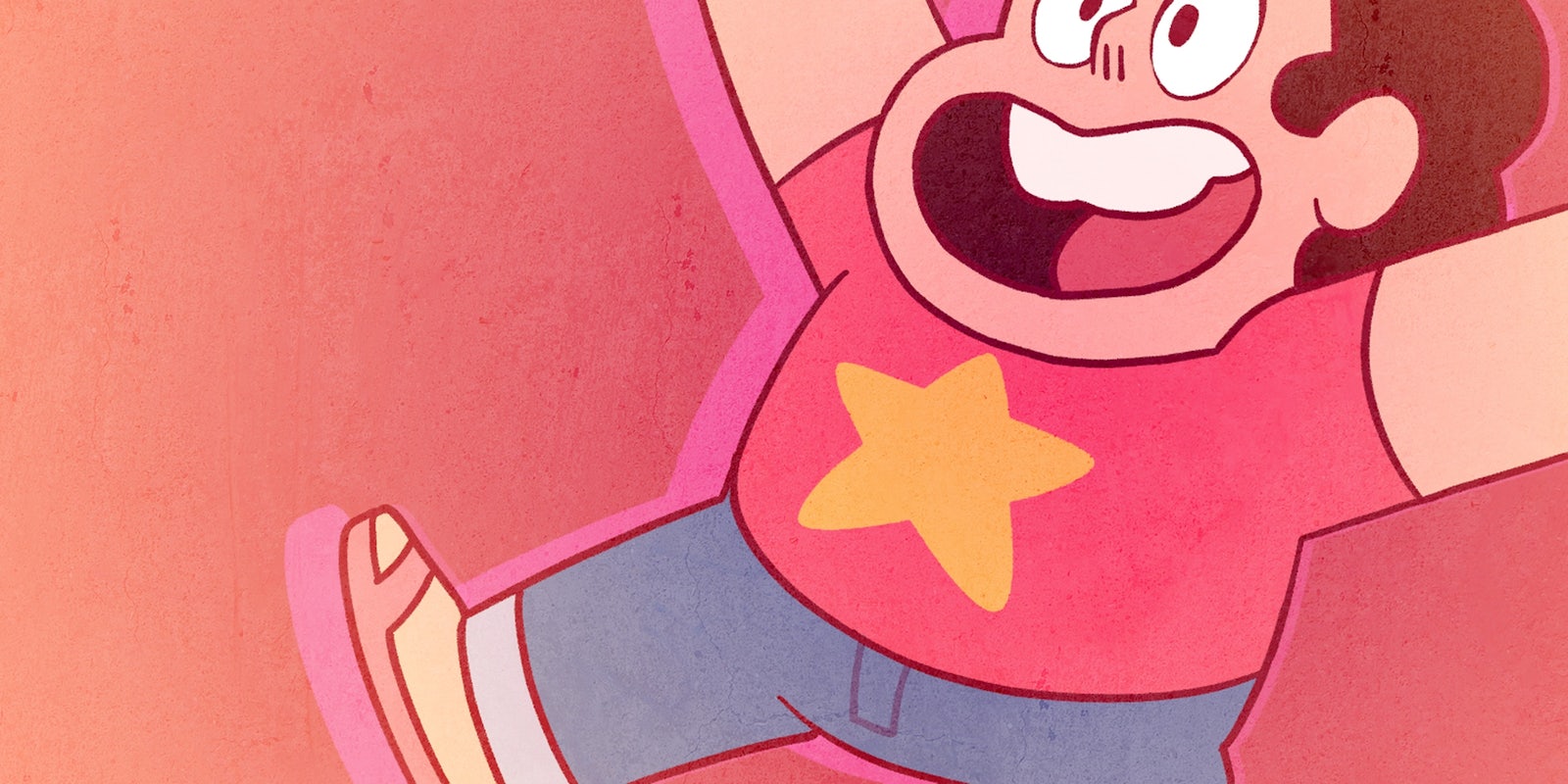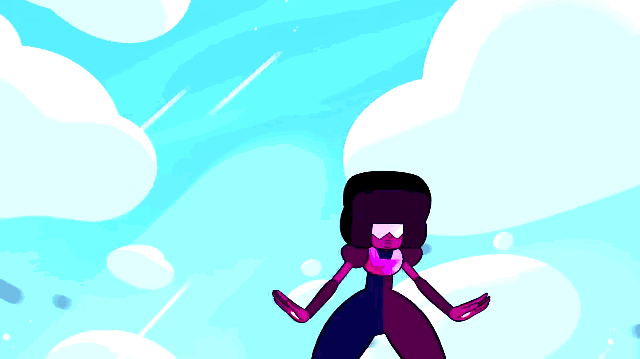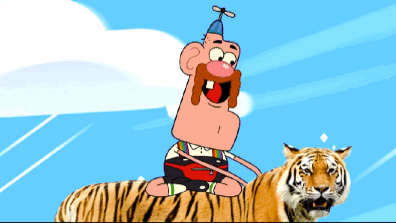Warning: This article contains minor spoilers for Steven Universe.
Steven Universe and the Crystal Gems are here to save the day for the foreseeable future.
Cartoon Network recently renewed Steven Universe, the animated series from Adventure Time writer and storyboard artist Rebecca Sugar, for two extra seasons. Now in its third season, the show has something along the lines of a consistent schedule.
Up until the renewal, episodes would air in a series of weeklong drops known as “StevenBombs” (five episodes that aired at the same time over the span of a week), but then fans would have to wait up to six months for a new set of episodes. Now, the show will air from June to August in what’s being called the “Summer of Steven.” If you can’t wait that long, you’re in luck: Cartoon Network is bringing the show back for a four-week special event called “Steven Universe: In Too Deep” that starts May 12.
Steven Universe first aired in 2013, and it has a passionate and devoted fanbase. In 76 episodes to date, Steven Universe is full of world-building, character depth, and fulfilling story arcs that explore consent, same-sex relationships, and the unconventional family with a nuance that most shows on TV don’t come close to achieving. Plus, many of the episodes feature catchy and whimsical musical numbers.
While it has the seal of approval from fans, they often worried that Steven Universe might not have it from Cartoon Network. (The uneven scheduling is only one factor.) But with the renewal, new fans will be able to hop on board and not have to worry about a sudden cancellation. If you’re wondering what this even is, we’ve got you covered.
Why do fans love Steven Universe so much?
Three gems and a Steven
Steven Universe follows the titular Steven, a half-human, half-gem character, and his three gem caretakers (who are part of an immortal, genderless alien race) as they fight to keep Earth safe from evil as well as the gems they fought a war against thousands of years ago. It takes place in the fictional town of Beach City, Delmarva, which appears to be based on the state of Delaware (although in the show Delmarva is its own separate state).
https://twitter.com/Soranomaru/status/713422729207222275
At the heart of Steven Universe’s many adventures, mysteries, and the many interactions between humans and gems, it’s ultimately a story about family—and a very unconventional one at that. After all, Rose Quartz, Steven’s mom and the former leader of the Crystal Gems, gave up her physical body so Steven could be born.
Steve is being raised by Garnet, Amethyst, and Pearl, the three Crystal Gems who followed Rose Quartz’s lead. They’re like a mother, sister, and a cool aunt, respectively, and they’re learning how to raise a human while teaching him how to be a gem—often with the hilarity, love, a sense of protection, and growth that comes with normal families. They clash and unite—sometimes literally, with what a process called fusion—and they are constantly learning about one another. Each of them are positive role models for Steven, and in the case of Garnet, who is a fusion of two gems named Sapphire and Ruby, a constant and consistent example of a loving, romantic relationship between two female characters.
“[The Crystal Gems] have expectations of [Steven],” PBS Idea Channel’s Mike Rugnetta explains. “They support and encourage him. But they also worry, underestimate, overprotect, and enable him. But in return he challenges and surprises them. He teaches them about his world as much as they do the same.”
Steven is surrounded by female characters, and he’s often the only male character in the room—a complete reversal of a TV and movie trope that’s all too common. According to Sugar, the strong female presence in the show was intentional.
“My goal with the show was to really tear down and play with the semiotics of gender in cartoons for children because I think that’s a really absurd idea that there would be something radically different about a show for little girls versus a show for little boys,” she told Entertainment Weekly last year. “It’s exciting to me to play with a lot of that language, because everyone’s very familiar with it but it really doesn’t make much sense. I used to really enjoy shows that were aggressively targeted to boys when I was a little girl and I know the same can be true the other way around, so why not have something that everybody can watch?”
Steven’s relationship with his father Greg is just as important. He doesn’t live with Steven or the Crystal Gems, something he’s never shamed for by the show, and there are instances where Greg is as vital to Steven’s character growth as the Crystal Gems or Steven’s best friend Connie Maheswaran. Greg’s also able to give him insight into his mom that Garnet, Amethyst, and Pearl don’t have.
They’re one big unconventional, functional family.
The real progressiveness of Steven Universe
The first thing you might notice about Steven Universe—aside from the rose-colored crystal gem where his belly button should be and the magic—is how much he feels like a real person. And in part, that’s because he is.
Steven Universe is based off Sugar’s brother Steven, whereas Garnet, Amethyst, and Pearl are all based on aspects of Sugar herself and how she acts around her brother. But his realness goes beyond his real-life influence.
He’s a complex character from the get-go, and as the show develops, so does he. He’s caring and wants to protect the people he loves from the creatures that come to Earth, he’s friendly and kind, and he’s sensitive. Sure, you’ll often see some of those qualities in other characters across television, but rarely do you see a male character that’s nurturing and in-tune to his feelings or allowed to be upset outside a list of approved reasons without being ostracized for it; he’s not held to the standards of masculinity. Steven can often shield others with a bubble and the weapon that comes out of his gem shield like Rose Quartz. It’s a defensive weapon instead of something used to attack like Garnet’s fists, Amethyst’s whip, or Pearl’s spear, but it’s just as vital for the Crystal Gems.
Steven has some traditionally feminine qualities, but he’s never shamed for it by Greg or the Crystal Gems or told to “man up” if he gets upset about something.
“That’s one of the reasons that I adore Steven: he’s kind, caring and has a big heart,” one redditor noted last year. “ And the reason I think that he’s important for young boys is that he teaches them it’s okay to be loving and kind. You can still be a hero.”
It’s a woman’s world
Steven is surrounded by women (and gems who identify as such) that he looks up to and learns from everyday. Garnet, Amethyst, Pearl, and Connie could easily just be archetypes of characters, and in some episodes play off of Pearl’s uptight nature or Amethyst’s occasional immaturity. Most of the time they’re each able to flourish just like Steve and show their own flaws. Amethyst is ashamed of where she came from, Pearl is still harboring feelings for Rose Quartz, and Garnet’s entire self—Ruby and Sapphire—can sometimes be at odds with each other. Connie is smart and shy, but she’s just as capable a warrior as the gems.
These relationships are healthy and are a normal part of the Crystal Gems’ lives. It’s an intimate relationship with respect and most importantly, consent. They can fuse because of necessity, a show of force, or in the case of Steven and Connie, it might happen completely by accident and result in something wonderful. When he first learns about the concept, he doesn’t question it but instead reacts to it with unadulterated joy; he just wants to see a giant woman.
Garnet is a unique example because her constant fusion is a loving relationship between two other gems—something that confuses the other gems she fights, who see it as a weak tactic—and she has an entire song devoted to how great it is (performed by Garnet’s voice actress, R&B singer Estelle). The start of that relationship, told in “The Answer,” will soon be published as a children’s book written by Sugar herself.
Consent and honesty are such important parts of fusing that the idea of a gem being forced into a fusion or tricking one into a fusion, as Pearl did with Garnet, is seen as a form of cruelty and betrayal.
The queer representation on the show is apparent with each of the gems—and especially in the case of Pearl’s feelings for Rose Quartz. Compared to other shows that still weren’t allowed to explicitly show its main characters getting together, it’s already one of the more progressive shows out there.
The anxiety of the Steven Universe fandom
A TV show with complex characters? Check. Geared towards young girls but has boys and adults fully onboard? Check. Feminist values? Check. An active, online following? Check. So why are fans constantly worrying that Steven Universe is about to be canceled?
We’re in a landscape where girls are rarely ever catered to on a larger scale outside of Disney princesses—just look at the lack of Leia, Black Widow, Gamora, and Rey merchandise for starters. Steven Universe has critical acclaim, an Emmy nomination, and five Annie Award nominations under its belt, but despite reassurance from the team behind the show, collectively referred to as the Crewniverse, fears about the show’s untimely demise aren’t subsiding.
Take Young Justice, for instance. The Cartoon Network series received critical acclaim both before and after its run, was praised for being “mature, intelligent,” and boosted ratings; the second season received an average of 1.9 million viewers. But in 2013, Cartoon Network canceled it along with the other DC Nation shows Green Lantern: The Animated Series and Tower Prep, leaving fans unfulfilled. Warner Brothers soon stopped fans’ attempts to Kickstart a third season.
In December 2013, writer and producer Paul Dini—who created Tower Prep—appeared on Kevin Smith’s Batman podcast where they discussed its cancellation as well as Green Lantern: The Animated Series and Young Justice. According to Dini, executives didn’t want girls watching their shows because “they don’t buy toys,” and while he said that was what happened to Tower Prep, fans also took Young Justice’s female audience as the reason for its cancellation.
Young Justice creator Greg Weisman has denied that it was because of its female fans and later said the budget came from a toy deal with Mattel, which weren’t selling. But still that narrative has stuck with fans, and one fan feared in February that “this will be exactly like Young Justice.”
Steven Universe also shares some kinship with Legend of Korra. Both shows are beloved, have complex characters and intricate storytelling, same-sex relationships, and from a fan standpoint, have a sporadic schedule, extended hiatuses, and received little love from the network that aired it. (Gravity Falls has had an unreliable schedule as well, taking four years to air two seasons.)
In Korra’s case, this meant starting a new season with little notice after a leak, then having little-to-nonexistent advertising to the point where fans didn’t even know when it was on, and ultimately being pulled off the air after declining ratings. It returned for season 4 just weeks after its third season ended, giving fans an indication that Nickelodeon just wanted to burn off the episodes as quickly as possible, and when it came back on TV, it came off the heels of learning that Nickelodeon cut an entire episode’s budget. Sure, the show ended on its own terms with the romance between Korra and Asami that fans have been waiting for, but it couldn’t openly show it like Avatar: The Last Airbender.
Cartoon Network’s irregular scheduling is another factor in the uneasy equation. New episodes aired irregularly and all at once before disappearing for a big hiatus, and while it’s a strategy it uses with other shows, the inconsistency is causing fans to become frustrated with the network.
“Is there a method to this madness?” Zach Blumenfeld wrote at the AV Club. “Absolutely. When you look at both the history of animated television scheduling and the statistics Steven Universe has generated over the past year, the StevenBomb-hiatus cycle begins to look like a brilliant response to the rise of binge-watching, allowing the show to dominate not only TV, but also the online arena.”
One report spread panic across parts of the fandom after Cartoon Network removed it from its schedule before it was added back in a few days later. But the show is huge on Tumblr. It has two official accounts—one run by the Crewniverse and an in-show blog run by Beach City’s resident conspiracy theorist— and it was the most reblogged animated TV show in 2015.
However, rumors of Steven Universe’s cancellation have been greatly exaggerated on more than one occasion, and Steven Universe writer Matt Burnett has had to reassure them that the show is still around along with longtime fans and members of the Steven Universe subreddit.
https://twitter.com/mcburnett/status/714268021448028161
https://twitter.com/mcburnett/status/714268297340915713
https://twitter.com/mcburnett/status/714268889186586624
https://twitter.com/mcburnett/status/714271272465797120
Fandom controversies
Not every TV show that has a big online following goes through the entire run without some bumps along the road and Steven Universe is no exception. It’s gotten comparisons to My Little Pony: Friendship is Magic in the past, and one fanartist was bullied for how she drew Rose Quartz, leading to a massive uproar in the fandom, but much of the show’s controversies stayed primarily with the fans themselves— until the U.K. version of a recent Steven Universe caused fans to accuse Cartoon Network of censorship.
After “We Need to Talk”—a flashback episode that revealed how Greg learned about gem fusion after meeting Stevonnie—aired in the U.K., fans noticed that a few frames were missing from the original U.S. version of the episode. In one scene, Greg recruited Rose Quartz, Garnet, and Amethyst to film a music video with him, which Pearl hijacks by fusing with Rose Quartz in order to show Greg what he’s incapable of doing as a human. (I promise it makes sense when you see it.) At one point they share a couple of looks, which at that point was the most explicit showcase of Pearl’s feelings for Rose Quartz.
Those looks are missing from the U.K. episode, which instead abruptly cuts to a couple of random shots of Greg reacting to the fusion. One fan put the two version side-by-side to illustrate the difference between the two versions of the episode.
https://www.youtube.com/watch?v=wm2403n3R7Q
Cartoon Network defended the decision in a now-deleted Facebook post, which said that programs are often amended for European audiences and that it feels “that the slightly edited version is more comfortable for local kids and their parents.”
Cartoon Network’s rationale for censoring that cartoon is extremely weak. @CNUKTweets pic.twitter.com/TqWrzgUJjS
— Chríss (@Chriss_m) January 6, 2016
The multiverse and worlds of fan theories
We love multiverses—so much that hundreds of shows have combined under one gigantic Tommy Westphall Universe, named after one of the characters in St. Elsewhere. So it’s only natural that fans have gathered most of Cartoon Network’s and Disney’s lineup into one giant multiverse.
Like the combination of five animated blockbuster films before it, Steven Universe is often combined in fanart with Adventure Time, Gravity Falls, Over the Garden Wall, Bravest Warriors, and Stars Vs the Forces of Evil; since Gravity Falls and Rick and Morty are already linked, it’s another connection.
With supernatural and sci-fi elements in many of the shows already, the possibilities are endless.
The main Steven Universe cartoon crossover comes courtesy of the season 2 episode “Say Uncle,” although it’s not considered canon. Uncle Grandpa’s titular Uncle Grandpa visits Beach City after Steven has some issues activating his gem shield in an episode that breaks the fourth wall on multiple occasions. At the end, Uncle Grandpa crosses off Steven’s name from his checklist of children to help, all of which are from other Cartoon Network shows (and some which are no longer on the air).
But multiverse or not, it’s only the beginning of the kind of deep-diving fans can accomplish. The episodes are shorter than most, clocking in at 11 minutes, but they’re still able to theorize about Steven, the Crystal Gems, and the other characters they’ve gotten to know over the past few seasons.
For example, they were completely spot-on about Garnet being a fusion. Steven Universe went the entire first season before introducing Steven (and us) to Ruby and Sapphire in “Jail Break.” We wouldn’t learn how they met and fell in love until nearly 25 episodes later.
However, the hints were always there. Garnet has two gems on her hands when a gem usually has one, and she has to activate two gems (red and blue) to enter her room in the Temple.
Another major theory looks into Lion, the aptly named magical pink lion who enters Steven’s life. Lion can transport Steven and Connie to different worlds, he is protective of Steven, and he has a pocket dimension in his mane that stores items related to Rose Quartz, such as her scabbard and a video tape she made for Steven shortly before he was born.
The two are connected in some way, but some believe that Lion is Rose Quartz.
Some fans also think that Jasper—the gem from Homeworld that Garnet faces off against in “Jail Break”—is a fusion, although there’s less evidence for that one. Burnett debunked that on Twitter in a now-deleted tweet, but it still lives on in Tumblr posts.
With a guaranteed five seasons (as of now) and at least a couple more months to hop on board and dive right in—episodes are available on Cartoon Network’s website, Hulu, Google Play, and Amazon Instant Video—it’s a perfect time to get caught up in time for the next wave of episodes. You’ll always find a way.




